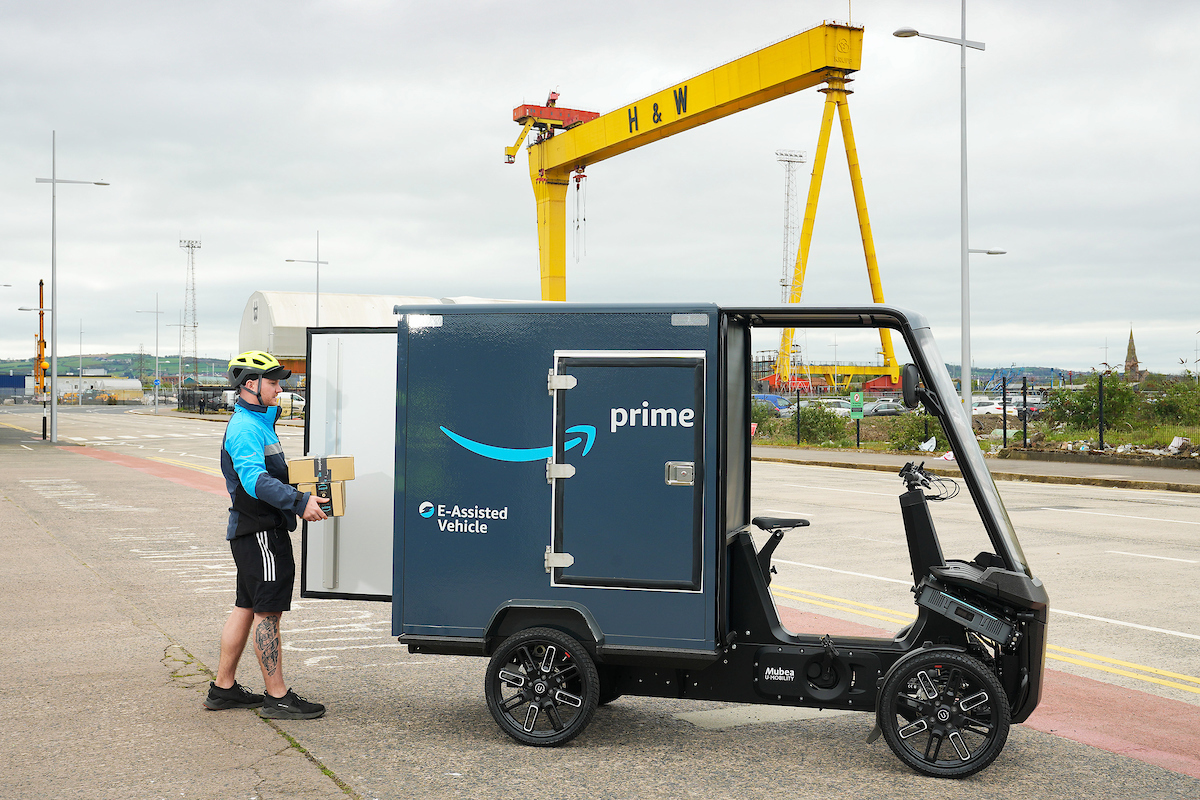Our survey and interviews looked at how and where retailers who were innovating with web and mobile were unsurprisingly top of the list.
1) MOBILE & WEB
The results of the survey – in which we offered retailers the choice of eight different areas of their business that they may be innovating in – showed that both the web and mobile led the way as the top focus, with each chosen by 77% of respondents respectively.
Unsurprisingly mobile is a huge focus for retailers given its rapid growth in recent months and retailers are working hard to bring cross device functionality into play. “It’s incredibly interesting how mobile has really had a significant impact within the past 12 to 24 months,” says Walls and Floors web development manager Tom Murrell. “Everyone knew it was on the horizon but the way people are searching and discovering on mobile and then completing purchase on desktops has really changed things,” he says.
This in itself has changed how retailers approach innovation. “You almost have to think mobile-friendly first now, then desktop. It’s important to realise that a new customer’s first impression of your business could well be on a mobile device,” says Murrell.
2) MARKETING, PERSONALISATION AND ANALYTICS AND BI
After web and mobile the next most popular area of focus in terms of the options we offered our survey respondents, was marketing, with 39% of respondents focusing their innovation attempts in marketing.
A number of retailers are looking at this as they seek to get closer to their customers than ever with personalisation leading the way. It’s become a user expectation now according to Murrell. “Amazon set the bar high years ago and it’s becoming the norm. Users will be less patient with a website that doesn’t tailor or save their personalisation preferences and personalisation and behavioural marketing automation will only become smarter and more integral,” he says.
“Remarketing and the ability to target in-market audiences with customised, highly relevant messages is extremely powerful and giving us to ability to get inside our audiences or prospects heads guiding different groups of people along almost subconsciously, serving up tailored content perhaps even before they have thought “I need some tiles today,” says Murrell.
For this analytics and good business information is essential and our survey showed this was a focus of innovation activity for 38% of respondents.
3) INSTORE INNOVATION
For multichannel retailers the challenge is integrating both online and offline and bringing digital innovation instore — whether through existing initiatives such as virtual changing rooms, or location technology such as iBeacon or newer digital innovations to enhance the customer experience. Retail businesses surveyed in the report also have instore innovation high on their priority list with 38% focusing their innovation activities on instore.
However some, such as New Look’s digital director Jack Smith, are waiting to see what innovations really best service the customer in this area before investing too heavily instore. “We are starting to look at lot more at the store experience but I’m being a bit of a laggard in the store arena from a digital perspective and that’s on purpose. I’m letting other retailers try it first – for example the use of mobile or digital screens instore. I want to let other retailers prove the value and am using other people to work stuff out,” he says.
Part of the reason for that, says Smith, is that he wants to ensure a seamless blend between web and instore content. “Digital is basically really successful when you get your content right – whether that’s editorial, product or photos. It has to work and be really nicely joined up. I’m spending a lot of time thinking about features and functions but also content and what the message is and how we join up those messages. It won’t be until we have got that sorted that we push it out to the store environment,” he says.
4) CUSTOMER SERVICES
Retailers are realising the need to get closer to their customers than ever – not only better connecting but better serving them too and as such this is another area of focus for digital innovation.
Our survey found that just over a third (34%) of retailers are focussing innovation on improving service to customers. Schuh for example introduced video help calls on its website last year to help aid its customers. Did their customers know they wanted such a feature? No. In fact not even Schuh did at the time – but it was impressed enough to try the technology when it saw it and its customers have now fallen in love with the new channel as they come as close as they can to replicating the instore experience by speaking face to face to an adviser online.
5) PAYMENTS
In our in-depth interviews with retailers payments is one of the key areas for innovation since there is so much current change in the market. New Look for example simplified its checkout earlier this year and is now looking at a number of new payment options to further augment the experience for customers. In our survey payments innovation was cited as another important priority for digital innovation with just under a third (32%) of respondents saying it was something they were focusing on.
“Digital innovation has the potential to revolutionise the retail industry, particularly in the area of payment,” says Ian Cranna, vice president of marketing and category at Starbucks EMEA. “The increasing speed and convenience of many payment methods now means we can just select and collect products – often reducing the level of interactions at the payment stage,” he says. For Starbucks in particular he says payments innovation has worked well. “We understood that more customers were choosing to pay with card over cash for small transactions and were looking for faster, more convenient ways to pay at Starbucks,” says Cranna.
Some retailers however are avoiding payment innovation for the moment. “There are certain areas of innovation that I will avoid such as payment because I will let the market decide and let the customer tell us what they want,” says Sean McKee, head of ecommerce and customer service at Schuh.
Customer attitudes to payments are changing and retailers have to make sure they keep up. “Customers increasingly expect to be able to make frictionless payments,” says Robin Phillips, director of omnichannel and development at Boots.
6) WEARABLES
Despite it being a market that is still evolving our survey showed that wearables was also a source of innovation interest for retailers with 9% of respondents focussing their innovation efforts in this area.
This is an area that is likely to see huge change with a consumer study published earlier this summer suggesting that 45% of UK consumers already own or plan to own wearable tech such as a smart watch in the next twelve months with 65% wanting such technology to enhance the shopping experience and 45% to save time when shopping.
Earlier this year M&S became the first retailer to design an app for the Apple Watch and wearables is also an area that Sam Barton, head of user experience at ShopDirect is looking at as the company tries to ascertain its role in today and tomorrow’s retail world. “Devices are becoming more important for the customer so people adopted smartphones as a shopping channel but what do watches and wearables and smart TV mean – how can you create engaging and rich shopping experiences that take advantage of those devices?” says Barton.
7) VIRTUAL AND AUGMENTED REALITY
Not on the list we provided in the survey, but nevertheless brought up in the in-depth retailer interviews, was the issue of virtual and augmented reality which many said could transform the retail experience for their customers and on a basic level is already doing so.
At Walls and Floors web development manager Tom Murrell says virtual reality could help the retailer in one of its main aims at the moment – that of inspiring customers on their purchase. “A new home or home renovation or DIY project is a highly considered purchase. We want people to discover us, trust us and feel confident in creating a home they’ve always dreamed of,” he says.
New technologies such as augmented reality and devices like the Oculus Rift could help in this aim, says Murrell. “It’s not exactly going to become a household item overnight but there could be some really exciting innovations with this online especially in the home and garden and DIY sector where you will almost be able to stand and look around your room before you buy it. That could bring a real emotional attachment and involvement to purchasing online as opposed to looking at an image on a screen,” he says.
For some this is already happening – especially in the furniture / home improvement arena where scale and cost makes it impossible to buy and try and which allows such retailers to supplement the traditional showroom with the online detail of a site.
Furniture retailers likes Made.com, Ikea and DFS are increasingly using digital technology to allow placing of product within an augmented reality environment and enable customers to design their spaces and see how products may transform their home.





